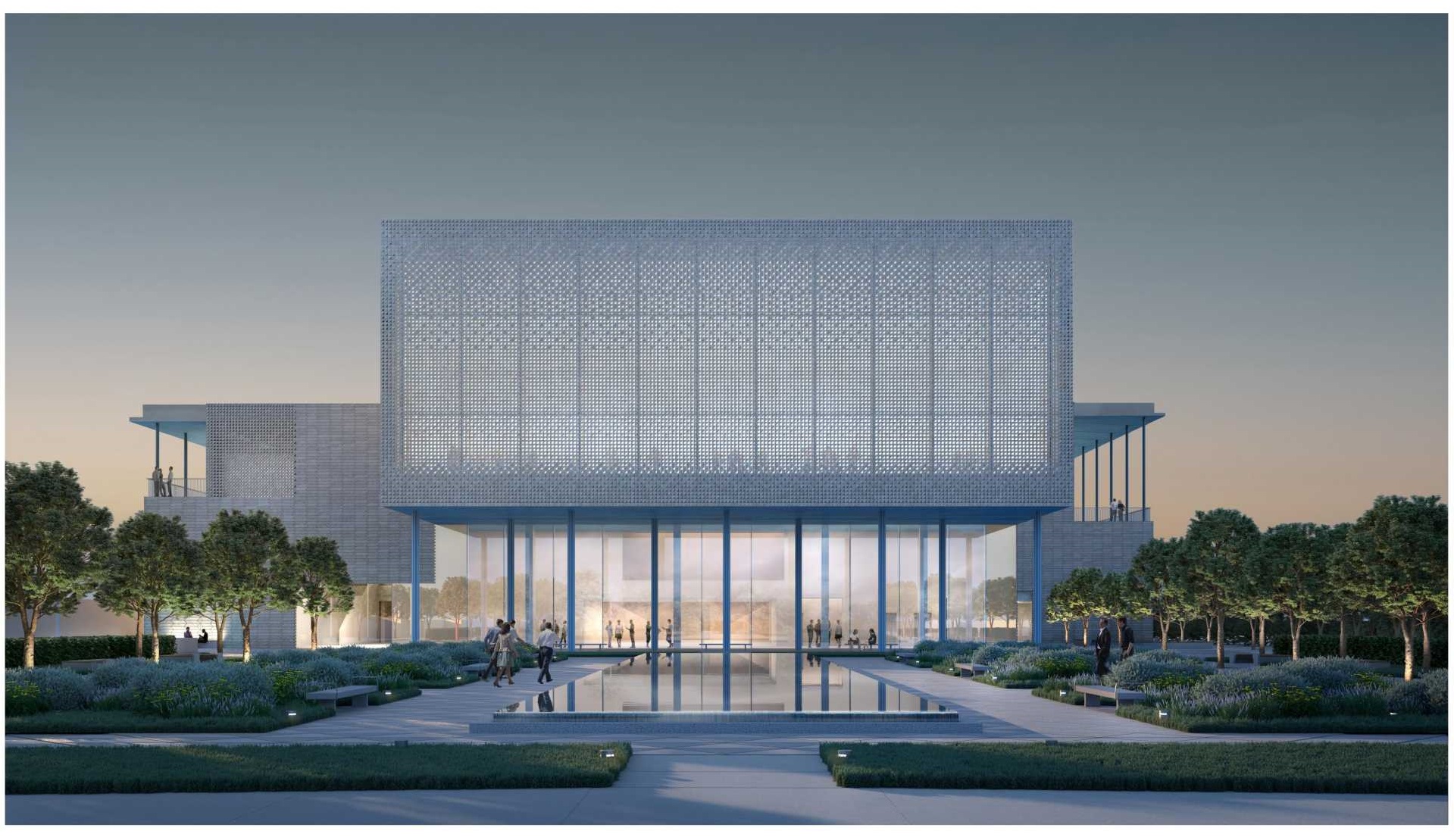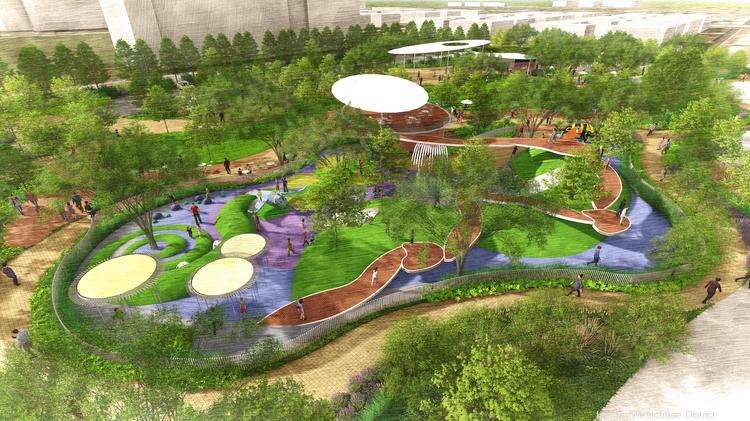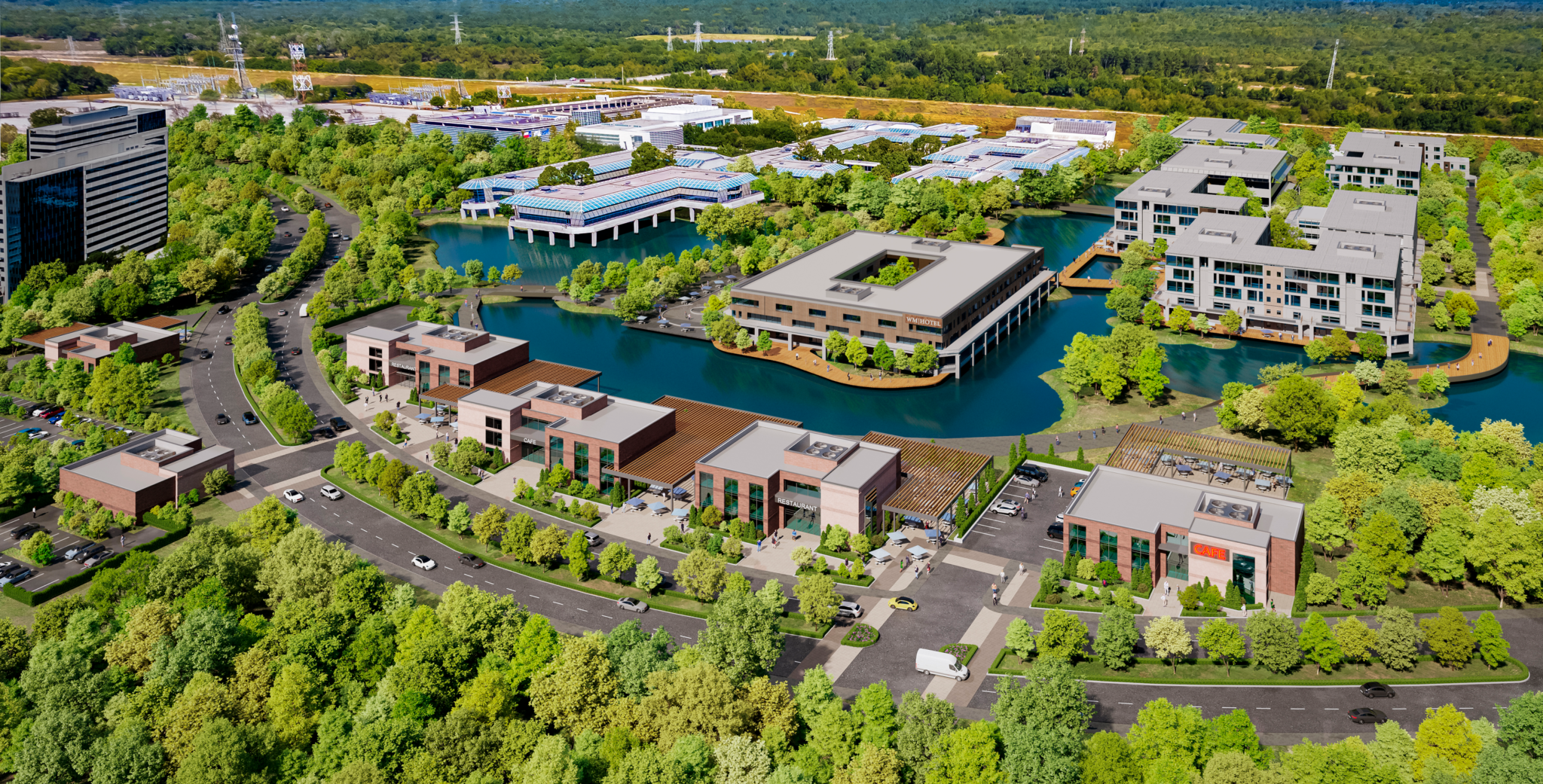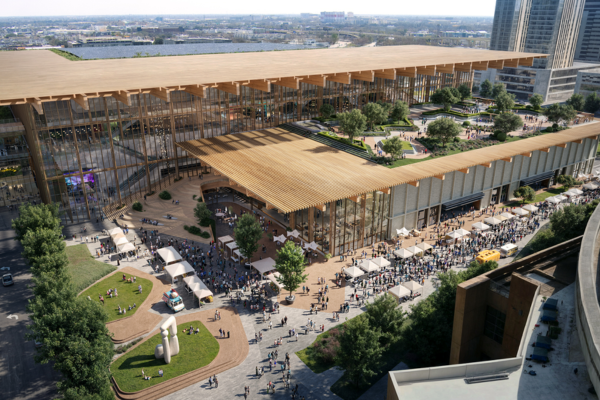Rising in Houston: Projects to Look Forward to in 2023 and Beyond
Published Jan 04, 2023 by A.J. Mistretta
2022 was a year of significant economic growth for Houston. The Texas Workforce Commission reports metro Houston gained more than 150,000 jobs in the first 11 months of the year, and while that estimate will likely be pared back when revisions are released it will still rank among the best years for metro job creation on record. Meanwhile, Fortune 500 company Hewlett Packard Enterprise opened its new Spring-area headquarters early in the year, motorists were using new tunnels beneath land bridges reconnecting Memorial Park by spring, and the University of Houston opened its $80 million College of Medicine building over the summer.
While the world faces uncertainty—from the effects of the war in Eastern Europe to instability in China—Houston’s prospects appear solid moving into the new year. The Partnership anticipates another year of solid job growth across the majority of sectors and new projects on the horizon hold tremendous promise for our region. Here’s a look at a few things we have our eye on.
1550 on the Green
Downtown high-rise projects have been concentrated on the western side of Houston’s central business district in recent years. But one heavily anticipated project is expected to advance the evolution of the city’s convention district when it debuts in 2024. 1550 on the Green is rising fast on the southern edge of Discovery Green, the 12-acre park fronting the George R. Brown Convention Center. As part of a three-block masterplan for the area, the 370,000-square-foot 1550 on the Green will include multiple terraces designed to embrace the neighboring park. The building will also include more than 7,000 square feet of ground-floor retail space, adding to the streetscape of the neighborhood. The international law firm Norton Rose Fulbright has already committed to relocating its Houston office to the tower once its complete.
Buffalo Bayou East
First announced in 2019, the Buffalo Bayou East plan calls for reimagining several miles of land along the bayou downstream from Downtown. Now underway, the $300 million project will build on what the Buffalo Bayou Partnership has already achieved at Buffalo Bayou Park but in a more industrial and under-utilized section of the city. Though it will take a decade to realize the full plan, a catalytic gift of $100 million from the Kinder Foundation last fall has helped jumpstart construction. Buffalo Bayou East will include miles of trails, remade parks, gardens, sports fields, affordable housing, public entertainment complexes, a boardwalk and more. The first phases of the project are likely to be complete within a couple years.
Camden Park
Ensuring more greenspace for Houston area residents has been the focus of a number of projects in recent years—from new pocket parks in low-income neighborhoods to the transformative Bayou Greenways Initiative connecting the city’s serpentine tributaries. Residents in the Westchase District will soon get their own new park with all the modern amenities of other recent projects. The nearly $14 million Camden Park broke ground in late 2022 on Wilcrest Drive. The project is packing a lot of features into a 3.4-acre footprint, including an activity lawn with performance pavilion, playground, dog park and a restaurant. The park will open sometime in the latter half of 2024.
East River
There’s a reason why there’s been a lot of buzz about the East River project in recent years. With a site spanning 150 acres a little more than a mile east of Downtown, there may be no larger urban infill project of such scale anywhere else in the country. And it’s starting to take shape. The first phase situated on the banks of Buffalo Bayou and slated for completion later this year includes 300,000 square feet of office space, 100,000 square feet of restaurant and retail space, 360 apartments and more. East River 9, a nine-hole golf course and restaurant concept is already open, offering a glimpse of the innovative mixed-use development to come. Future phases will be realized over the next decade-plus.
Galapagos Islands at Houston Zoo
Celebrated as the first major zoo exhibit to highlight the wildlife of the Pacific archipelago, the Houston Zoo’s immersive Galapagos Islands exhibit is anticipated to open this spring. Located near the entrance of the 55-acre zoo, the Galapagos exhibit will feature sea lions, giant tortoises, sharks and a first for the zoo, Humboldt penguins. Last year the Houston Zoo celebrated its centennial year and touted the fact that nearly half of its footprint has been reimagined as “immersive habitats” designed to give animals more space and allow visitors to experience them in more realistic environments. The Galapagos Islands exhibit represents the largest initiative in the six-year, multi-phase plan.
High Street Residential Mixed-Use Project
Stretching from Midtown to Uptown and well past the Beltway to the west, Westheimer Road is arguably the commercial backbone of Houston. In recent years, developers have sought to line the thoroughfare with a broader mix of uses, replacing antiquated strip centers and single-use retail spots with mixed-use projects that increase density and boost sidewalk appeal. Case in point: Trammell Crow Co.’s High Street Residential will break ground soon on a $97 million project at the corner of Westheimer and Kirby that will put 209 luxury residential units on top of nearly 3,000 square feet of ground-floor retail. Projects like this one, slated for completion in 2024, and the recently completed Montrose Collective near the intersection of Westheimer and Montrose are making this busy stretch of the thoroughfare more pedestrian-friendly.
Ismaili Center
The vision for the Ismaili Center now rising on 11 acres fronting Allen Parkway dates back to 2006. But multiple setbacks didn’t allow construction to begin until 2021. When completed in 2024, the contemporary designed center will be a free gathering space not just for Shia Ismaili Muslims but for people of all backgrounds and faiths, according to its backers. The center will include gardens, spaces for prayer and cultural events and other gathering spaces. It’s the first of its kind in the United States, joining other Ismaili centers in cities such as London, Dubai and Vancouver. Houston Mayor Sylvester Turner has said the center has the potential to become an internationally recognized landmark for the city.
TMC Helix Park
The Texas Medical Center has been working for years to realize its vision for an innovative new life sciences campus bringing together industry, academia and entrepreneurs. That vision becomes reality this year when the TMC3 Collaborative Building opens at the emerging TMC Helix Park. The building is part of the first phase of the 37-acre project going up just a short distance from TMC itself. TMC Helix Park will include 6 million square feet of developed space—including multiple research and commercial buildings and a hotel/conference center—surrounding five unique parks totaling 18 acres.
Watermark District
A developer has plans to revamp one of the most recognized corporate campuses in Houston. Midway will reimagine ConocoPhillips’ former 70-acre Energy Corridor campus into a mix of retail, office and residential uses, complemented by a hotel; a groundbreaking on Watermark District is expected in the next few months. The office complex sits atop a series of manmade lakes, a feature that will be retained in the redo to maintain the lush feel of the campus just north of I-10. Midway expects to deliver 650,000 square feet of Class A office in addition to the other uses.
Learn more about why businesses are choosing Houston and what it means to live, work and play in the Bayou City.
 The Houston Report
The Houston Report






















